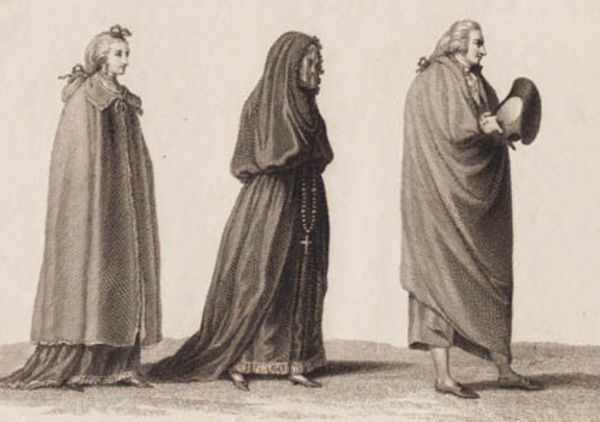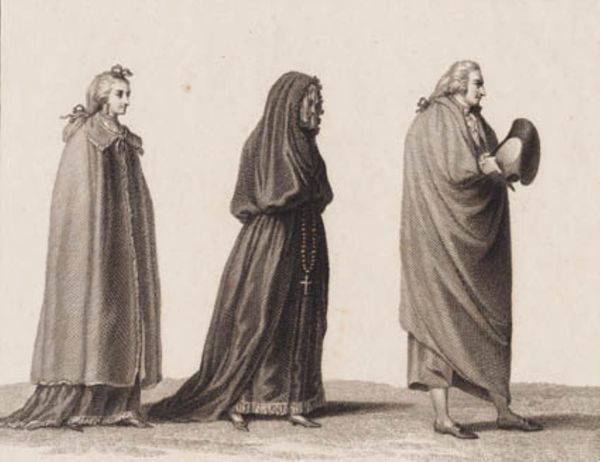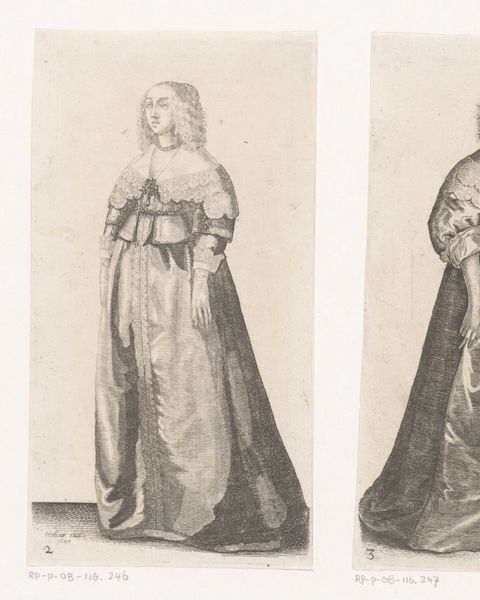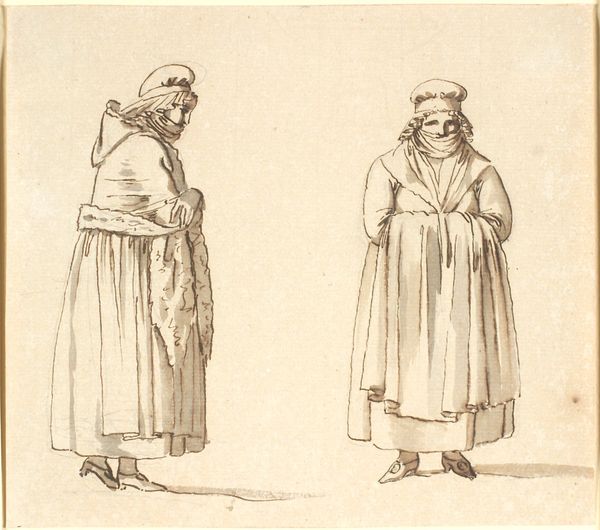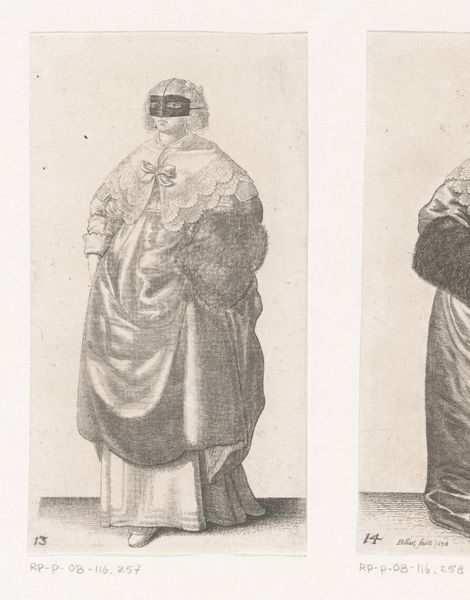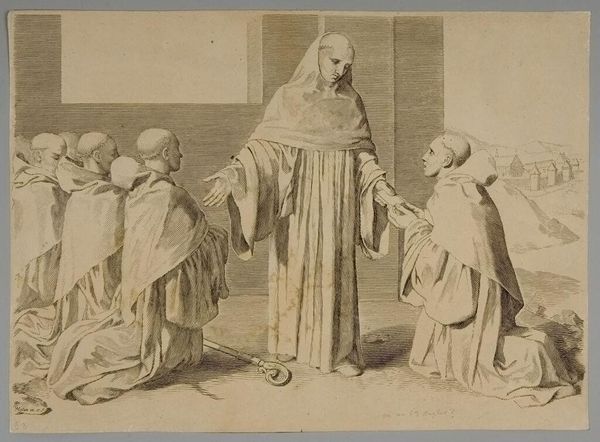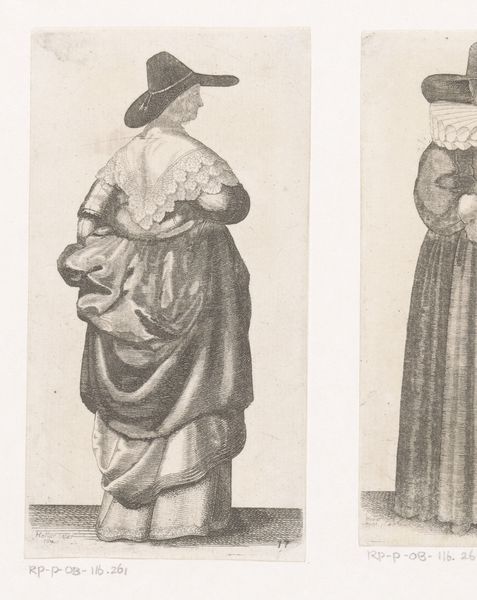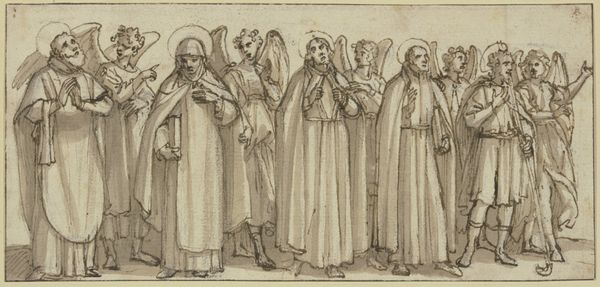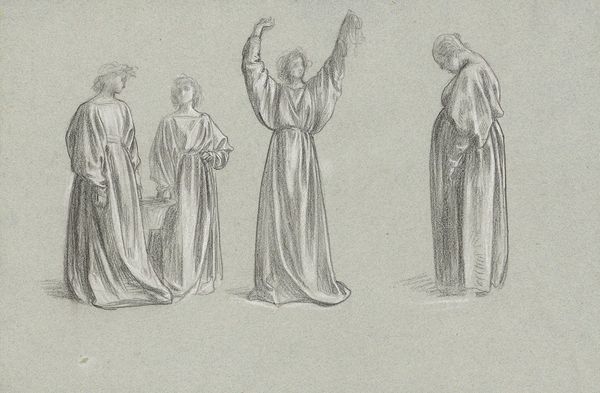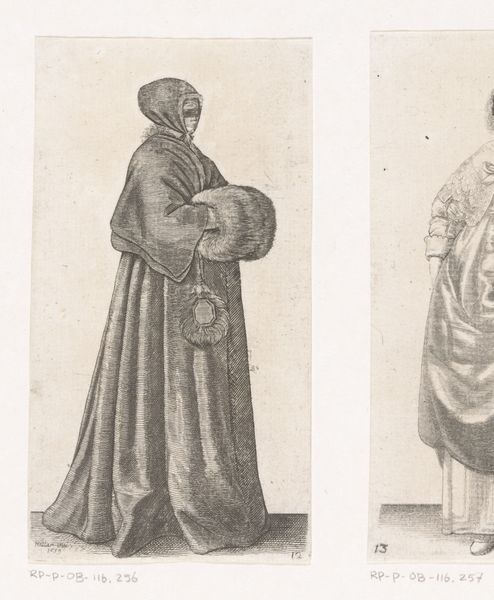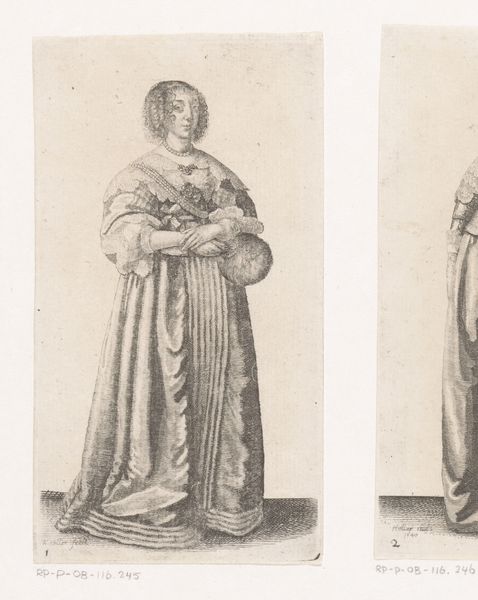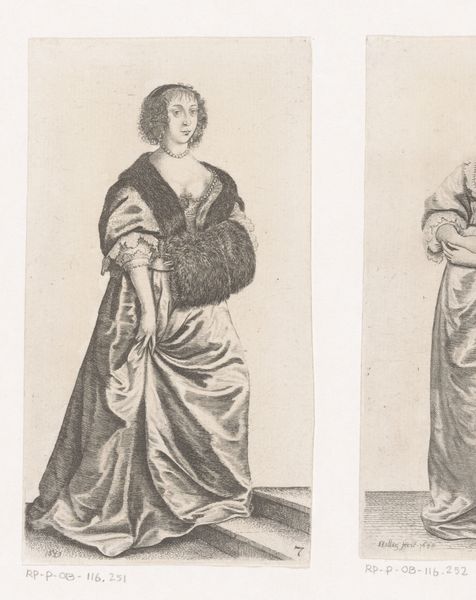
Tre portugisere. Anvendt i J. Murphy: 'Travels in Portugal. 1789-90' 1795
0:00
0:00
print, etching
#
portrait
#
neoclassicism
# print
#
etching
#
genre-painting
Dimensions: 211 mm (height) x 289 mm (width) (bladmaal), 199 mm (height) x 275 mm (width) (plademaal), 132 mm (height) x 190 mm (width) (billedmaal)
Curator: Welcome. Today, we're exploring an etching by J.F. Clemens from 1795 entitled "Tre portugisere. Anvendt i J. Murphy: 'Travels in Portugal. 1789-90'". It's currently held at the SMK, the Statens Museum for Kunst. Editor: The somber, almost severe mood strikes me immediately. There's a formality in the way the three figures are presented. Notice the pronounced linearity in the etched lines. Curator: This work serves as a fantastic entry point to discussions around representation and identity. How do these three Portuguese individuals, depicted through the eyes and hands of Clemens, embody or perhaps challenge the colonial gaze? The varied attire certainly speaks to distinct social strata. Editor: Indeed. I am also interested in the printmaking process. The uniformity achieved by etching multiple lines to create tonal variations. What were the different states of the etching and how was this particular state acquired? Who had access to prints such as this and what sort of labor was involved in its production? Curator: Those are critical material questions. The woman on the left, with her layered fabrics and elevated hairstyle, juxtaposed against the monk in the center clutching his rosary beads… How are ideas about faith, gender and class being constructed and performed here? Where did the source imagery for this come from and what biases might it hold? Editor: The cloaks that cover the individuals. They are hiding and revealing the bodies, and signify both luxury and a denial of material pleasures at the same time. Curator: Right. It's crucial to consider the context in which Murphy's "Travels in Portugal" was published and consumed. The work perpetuated or interrogated existing stereotypes, as the exotic "other." Editor: It definitely provokes consideration of the means of cultural consumption, and I am curious about the distribution and trade networks that helped to place printed imagery like this in homes, libraries, and collections, feeding curiosity and shaping perceptions of foreign cultures. Curator: It gives us an opportunity to reflect on the power dynamics inherent in cultural exchange and representation, inviting us to engage critically with historical narratives and reimagine the stories they tell. Editor: Ultimately, these etchings tell us about the lives of Portuguese, and about the economy that allowed this to be disseminated.
Comments
No comments
Be the first to comment and join the conversation on the ultimate creative platform.
